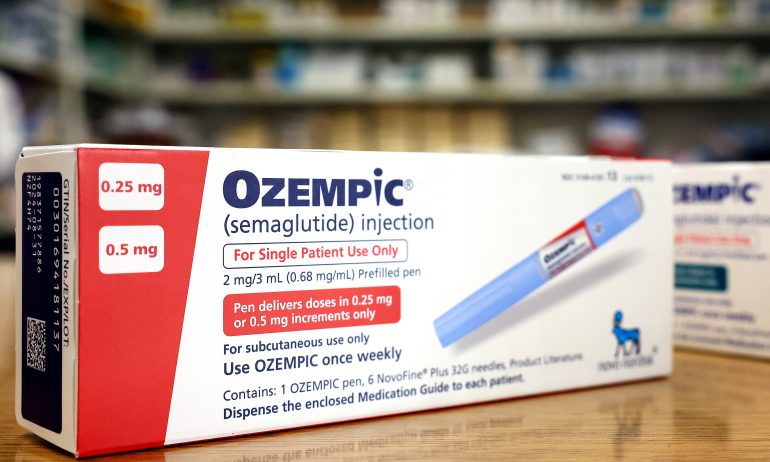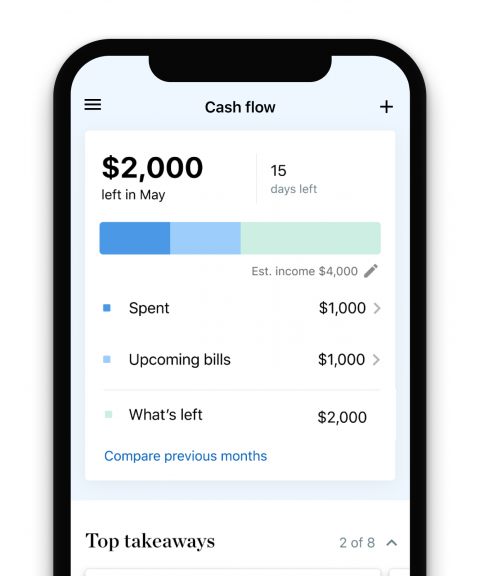Recent reports have depicted highly profitable snack and fast food companies quaking in their boots over the threats posed by appetite-suppressing drugs like Ozempic.
These pearl-clutching (or more aptly, Pringles-clutching) reports are likely premature. That’s largely because weight-loss drug usage isn’t yet widespread enough to make a difference to the food economy.

As more weight-loss drugs are developed and approved by the FDA, that could all change. But the stars must align, and in this case that means: Shortages cease and there are enough injectables to go around; the price comes down to an affordable level for the average consumer; health insurance begins covering these drugs for weight loss; the known side effects prove tolerable enough for long-term use; and no new dire side effects emerge that deter consumers entirely.
In other words, there are a lot of “ifs and maybes” involved that make experts like Barry Popkin, a professor of nutrition at the University of North Carolina Gillings School of Global Public Health, skeptical that the drugs will have a significant economic effect anytime soon.
“It’s not going to have an impact on the population unless the drugs get brought down in price. Until then, you’re not going to see a monster impact in our country,” says Popkin. “It really needs to be in the hundreds of millions of consumers to have a monster impact. Even if out of 300 million consumers, a million take those drugs, it’s a tiny drop in the bucket for the food industry.”
The barriers to entry and questions about the risks of long-term use mean these drugs are unlikely to leave a mark on either highly profitable junk food companies or the broader food economy in the near future.
How these new weight-loss drugs work
The new class of weight-loss drugs are glucagon-like peptide 1 (GLP-1) drugs. The drugs include semaglutides like Ozempic and Wegovy, which are made by Novo Nordisk, a Danish pharmaceutical company; tirzepatides like Mounjaro, which is owned by Eli Lilly; and liraglutides like Saxenda, which is owned by Novo Nordisk.
GLP-1 drugs make your desire to eat plummet by mimicking a naturally occurring hormone that, when entering the body, sends the message to your brain that you’re full. It also simultaneously slows down the digestive system.
The effect is far more dramatic than the digestive-tract-churning teas that weight loss influencers sling on social media: The Mayo Clinic cites studies that found, depending on the drug, users can drop anywhere from 10.5 to 15.8 pounds. The weight loss can be even higher — about 33.7 pounds — for those who combine the drug with lifestyle changes.
Health insurance rarely covers the cost of these drugs, at least for weight-loss purposes. Ozempic may be the best-known GLP-1, but it isn’t actually approved for weight loss, as it contains a lower dose of semaglutide than Wegovy, which is FDA-approved as a treatment for obesity. Paradoxically, Ozempic is usually covered by health insurance because it's usually covered for non-weight-loss purposes, while Wegovy is less likely to get the green light since it is explicitly a weight-loss drug.
GLP-1 injections are done weekly and are intended for long-term use, which means if you stop taking the drug you could gain weight again. The drugs also have the potential for unpleasant-to-serious side effects. The most typical reactions are gastrointestinal problems that could be severe, including the potential for ileus, a condition in which the intestines temporarily stop working, according to the FDA.
An effective, at-home injectable weight-loss drug is unsurprisingly appealing to American consumers who want to drop weight fast. Prescriptions for some of the most popular weight-loss drugs jumped 300% in less than three years, according to Trilliant Health, a health care analytics firm.
Fewer cravings could be a blow to Big Snacks
Throughout October, the GLP-1 hype in the media led to fears that America’s newly resolute dieters would put a dent in the junk food industry’s profits — which led to scrambling among snack-makers to reassure their investors:
On Oct. 2, the CEO of Kellanova — the maker of snack foods like Eggo waffles, Pop-Tarts, Rice Krispies Treats, Pringles and Cheez-Its — told Bloomberg that the company was studying how new weight-loss drugs alter dietary behaviors in order to “mitigate” any possible impact.
On Oct. 3, U.K.-based Barclays Investment Bank recommended that investors short sell stocks for junk food companies.
On Oct. 4, it was widely reported that Walmart found that customers who filled GLP-1 prescriptions subsequently spent less on food purchases.
On Oct. 11, the CEO of PepsiCo — maker of Pepsi sodas, along with snacks like Doritos and Cheetos — reportedly said during an earnings call that so far there’s been a negligible impact on the business, but they’re keeping watch for any potential headwinds.
On Oct. 19, Nestle reportedly said during an earnings briefing that it was working on food products specifically intended to meet consumers’ appetite-suppressed needs as weight-loss drugs take hold in the market.
On Oct. 30, shares of Krispy Kreme Inc., the eponymous doughnut creator, tumbled after analysts expressed concern about the impact of GLP-1 on demand for the confections.
All of this alarm-sounding may be overstated, for now, but isn’t entirely unwarranted: Among those who are using GLP-1s, nascent evidence suggests that lowered appetites lead to fewer grocery purchases, in general, and fewer purchases of snacks, in particular.
Consumers who used GLP-1 medications and saw 15 pounds or more of weight loss have cut their grocery purchasing by 11%, while those who used the drugs and lost less than 15 pounds reduced purchases by 7.7%, according to a Dec. 5 survey analysis by Numerator, a data and tech company servicing the market research industry. Snack purchasing declined by 8.8% among the group that lost 15 pounds or more.
But these slimming drugs come at a hefty price
Even if consumers want to curb their appetites and drop weight, they might not be able to afford to. GLP-1 drugs are expensive and, due to a shortage, both Wegovy and Ozempic have limited availability in certain dosages, according to the FDA.
An assessment of GLP-1 injectable drug prices worldwide, released Aug. 17 by KFF, an independent health policy research, polling and journalism organization, found that the typical price for Ozempic is higher in the U.S. than in other countries. The typical price for Ozempic is $936 per month ($11,232 annually) while Wegovy is $1,349 per month ($16,188 annually).
Health insurance rarely covers the cost, at least for weight-loss purposes. Medicare doesn’t cover any prescription drugs for weight loss, but Ozempic is covered for diabetes.
Be it the high price tag or the laundry list of side effects, the viability of long-term GLP-1 use is up in the air: An analysis of pharmacy and medical claims data by Prime Therapeutics, a pharmacy benefits manager, found that only 32% of 4,255 patients who had been prescribed GLP-1s continued taking the drug a year after the initial prescription.
“What we don't know, and I don't think we're going to know for a while, is how long people keep taking these drugs,” says Marion Nestle, a molecular biologist, nutritionist, New York University professor emeritus and public health advocate who blogs about food politics. “The story is that you have to take them forever or the weight is going to come back.”
Experts say snack food giants bear responsibility for obesity
The current crop of GLP-1 drugs are costly to consumers, but arguably, so is obesity. The condition is prevalent in the U.S., with one in three adults considered obese, according to the Centers for Disease Control and Prevention. For children, the rate is 1 in 5, and those who are obese in childhood are more likely to remain obese into adulthood.
“The food industry went through a deliberate campaign in the 1980s and '90s to encourage people to snack. They created this situation, and they've got to deal with the consequences.”Marion Nestle, molecular biologist, nutritionist
Americans with obesity pay an estimated $1,861 in excess medical costs annually, according to a 2021 report by researchers at Harvard University and George Washington University. Severe obesity is even more expensive: $3,097 in excess cost annually per adult.
“For many people, losing five or 10 pounds is virtually impossible,” says Nestle (the molecular biologist, not the company). “They can't do it because the social environment in which they live is such that food is available all the time. Everybody's eating it and they're expected to eat it.”
Popkin says the roots of the food industry’s role in obesity began in the latter half of the 20th century as global food companies began to “pull apart, almost molecule-by-molecule, the components that go into food and reconstructed them into what we now call ultra-processed foods.” He adds, “Back then we just called them junk food. But they did it to a large component of the modern packaged food supply.”
Both Popkin and Nestle say the snack food industry is directly responsible for encouraging people to eat larger portions of all food, as well as ultra-processed snacks.
“The food industry went through a deliberate campaign in the 1980s and '90s to encourage people to snack,” says Nestle, adding “They created this situation, and they've got to deal with the consequences. I'm not very sympathetic.”
Cheaper GLP-1s are on the way
GLP-1 drugs are likely to get cheaper, and the wait for an affordable version may not be too long. If insurers begin covering the drugs, it would likely lead to widespread usage that could change the food industry.
Nestle says, “If enough of these versions get out there, there's going to be competition. Once the studies show without question that people's health improves, it's very hard for health insurance companies to say they're not going to pay for these drugs.”
Eli Lilly, which already produces the GLP-1 drug Mounjaro, recently introduced a cheaper weight-loss drug called Zepbound that’s now available at pharmacies in the U.S., retailing for about $1,060 per month ($12,720 annually), according to the company. That’s 21% lower than the out-of-pocket price for Wegovy.
A less expensive GLP-1 alternative could spur other pharmaceutical companies to introduce their own cheaper versions. Pharmaceutical companies have the incentive to develop and make drugs widely available; recent projections by Goldman Sachs Research assert that GLP-1 drug revenue could reach $100 billion annually in the next decade.
The demand is already there: Nearly half of adults (45%) say they’d be interested in taking a safe and effective weight loss drug, according to a July 2023 KFF Health Tracking Poll.
Impacts to the food industry might not be what you expect
Out-of-pocket costs, lack of health care coverage, shortages and potential for side effects of GLP-1s may be enough to curb any immediate concerns within the snack food industry’s U.S. operations.
And even if GLP-1s do become more accessible and practical for long-term use, Popkin says worldwide companies — like grocers and the biggest food producers — are less likely to see much of a dent to their businesses.
“Manufacturers like Walmart, Aldi and Trader Joe’s are selling in every country in the world. It’s not just Europe and the U.S., but in the third world, too,” says Popkins. “These are huge chains. They could stand to lose in the U.S., but they’re not going to. And they might even gain.”
The gains could come from the most expensive items in the grocery store — the food around the edges of the supermarket, such as produce and meat, which are the primary profit source in the food industry, says Popkin. “So for the food sector, if people are shifting out of the middle of the aisles to the edges of the store, they're gaining more. If the world eats more fruits and vegetables, farmers gain more income and grocery stores would make more money.”
As for snack food companies, how might they respond to widespread use of GLP-1s? It’s possible that they’ll change the portions or what’s in the products to meet consumers where they are, says Nestle, adding, “Maybe they’ll market smaller portions — now there’s a concept.”
(Photo by Mario Tama / Getty Images News)



